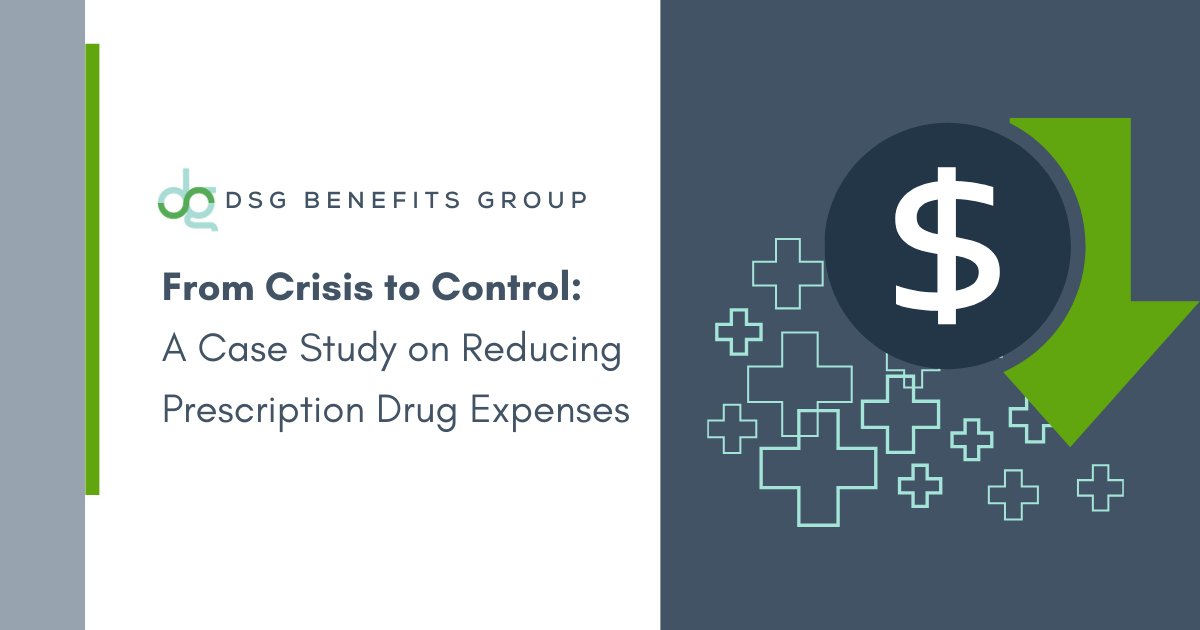Rising prescription drug costs are a major concern for many employers. One company with 500 employees in the DFW area, grappling with double-digit premium increases year after year, found itself at a crossroads.
Despite their best efforts to control costs through strategies like mandatory generics and step therapy, nothing seemed to work. Their health plan expenses continued to climb, and the coverage they provided to their employees steadily deteriorated.
Feeling hopeless and with their backs against the wall, they knew they needed a new approach. That’s when they turned to us to find a solution.
Their primary concern was its skyrocketing prescription drug expenses, which were driving their overall health insurance costs through the roof.
The Objective: A New Approach to Cost Control
The company approached us with one clear goal: to get their health insurance costs under control, with a specific focus on reducing their prescription drug spending. They were open to new ideas and eager to implement strategies that would deliver real, measurable results.
The Strategy: Tackling Prescription Costs with a Multi-Pronged Approach
Reducing prescription drug costs can be one of the most effective ways to manage overall health insurance expenses.
We devised a strategy that focused on three key areas:
1. Partnering with an Independent Pharmacy Benefit Manager (PBM)
The first step was to partner with an independent PBM. Unlike traditional PBMs that often have complex and opaque pricing structures, an independent PBM offers transparency in its fee schedule. This transparency allowed the company to immediately reduce administrative costs associated with managing their prescription drug program. By ensuring they were only paying for the services they truly needed, the company could direct more of their budget toward actual healthcare benefits for their employees.
2. Separating Specialty Drugs from the Health Plan
Specialty drugs are a significant driver of health plan costs, often costing more than $50,000 annually per medication. These drugs, while essential for some employees, were a major contributor to the company’s escalating expenses. We recommended separating the coverage of these specialty drugs from the traditional health plan and transitioning them to a specialized program. This move significantly reduced the costs associated with specialty medications, freeing up resources to better manage other areas of the health plan.
3. Incentivizing the Use of Generic Drugs
Instead of mandating the use of generic drugs—a strategy that had proven ineffective in the past—we incentivized employees to choose generics. By covering all generic drugs priced under $5 at 100%, the company encouraged employees to opt for lower-cost alternatives without compromising on the quality of care. This approach not only reduced drug costs but also increased employee satisfaction by lowering out-of-pocket expenses.
The Results: A Dramatic Reduction in Prescription Drug Costs
The results of this targeted strategy were nothing short of remarkable. In the first year of implementation, the company saw its annual prescription drug costs drop from $773,000 to $722,000. By the second year, costs had decreased even further, reaching $507,000—a 34% reduction over just three years.
These savings had a profound impact on the company’s overall health insurance costs. Not only were they able to control expenses, but they also avoided making cuts to employee benefits or increasing employee contributions. Instead, they were able to offer a more sustainable and attractive benefits package, helping them retain and attract top talent.
Strategic Planning Yields Big Savings
This case highlights the power of a well-thought-out strategy when it comes to controlling health insurance costs. By focusing on prescription drug expenses—a significant but often overlooked area—we helped this client achieve substantial savings while maintaining the quality of care for their employees.
If your company is struggling with rising healthcare costs, particularly in the area of prescription drugs, it’s time to explore new strategies. With the right approach, you can gain control over your spending, improve your benefits package, and ultimately create a healthier bottom line for your business.
You deserve a benefits program that both your employees and your bottom line will love.

